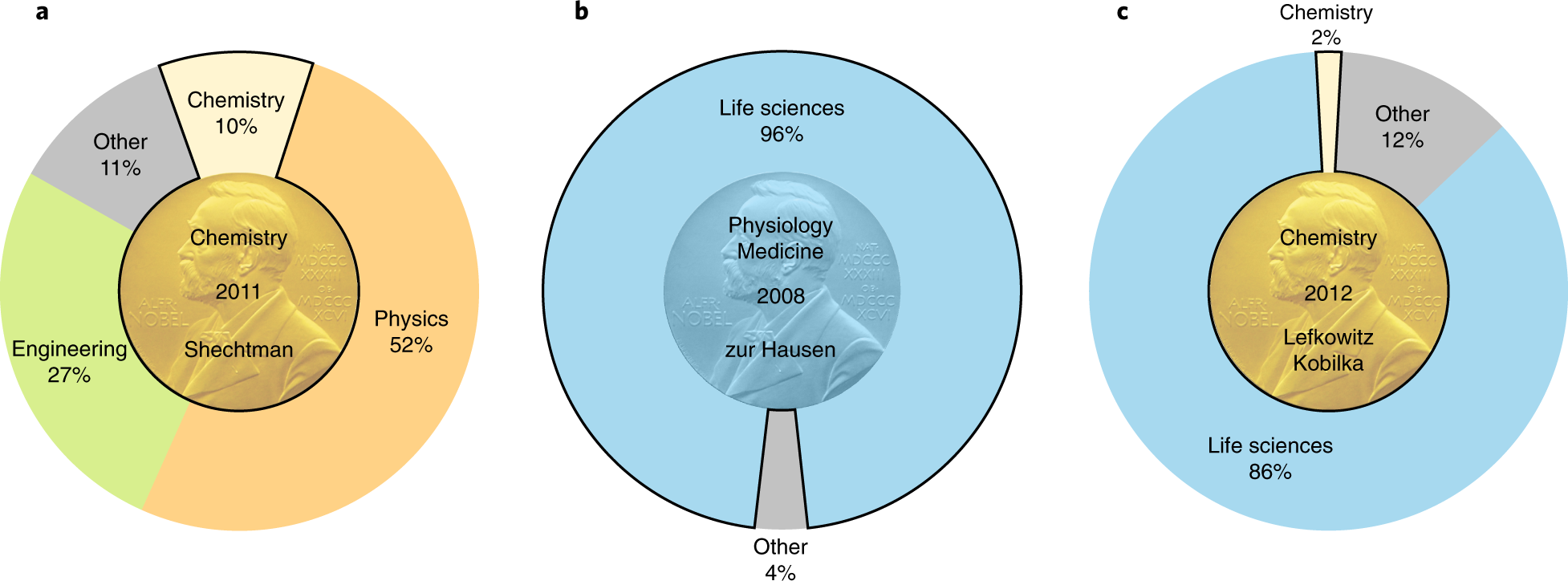"...we explore interdisciplinarity in the
most prestigious award in science, the Nobel Prize. We document a tendency of
Nobel Prizes to neglect interdisciplinary discoveries, especially between
physics and the life sciences. Given the increased growth of interdisciplinary
high-impact research over the last three decades, we have reached the critical
point in time where the issue of recognizing outstanding interdisciplinary
research has become truly pressing" https://arxiv.org/pdf/1811.00286.pdf
 FIG. 1. The disciplinary/interdisciplinary impact of Nobel Prize winning discoveries. a) Shechtman’s 1984 paper
on quasicrystals [4], rewarded with the Nobel Prize in chemistry in 2011, had a largely interdisciplinary impact, being cited
significantly by papers from physics, engineering and its field of award, chemistry. b) Dixon et al.’s 1986 paper on cell
receptors [5], earning Lefkowitz and Kobilka the prize, is a chemistry Nobel Prize whose impact is almost exclusively outside
of chemistry. The paper has been mostly cited by the life sciences. c) In contrast to chemistry, the impact of Nobel Prize
papers in physiology/medicine is highly limited to one field – citations almost exclusively come from the life sciences. A typical
example is Schwarz et al.’s 1985 paper on the papillomavirus [6], Nobel Prize in physiology/medicine in 2008 to zur Hausen
FIG. 1. The disciplinary/interdisciplinary impact of Nobel Prize winning discoveries. a) Shechtman’s 1984 paper
on quasicrystals [4], rewarded with the Nobel Prize in chemistry in 2011, had a largely interdisciplinary impact, being cited
significantly by papers from physics, engineering and its field of award, chemistry. b) Dixon et al.’s 1986 paper on cell
receptors [5], earning Lefkowitz and Kobilka the prize, is a chemistry Nobel Prize whose impact is almost exclusively outside
of chemistry. The paper has been mostly cited by the life sciences. c) In contrast to chemistry, the impact of Nobel Prize
papers in physiology/medicine is highly limited to one field – citations almost exclusively come from the life sciences. A typical
example is Schwarz et al.’s 1985 paper on the papillomavirus [6], Nobel Prize in physiology/medicine in 2008 to zur Hausen